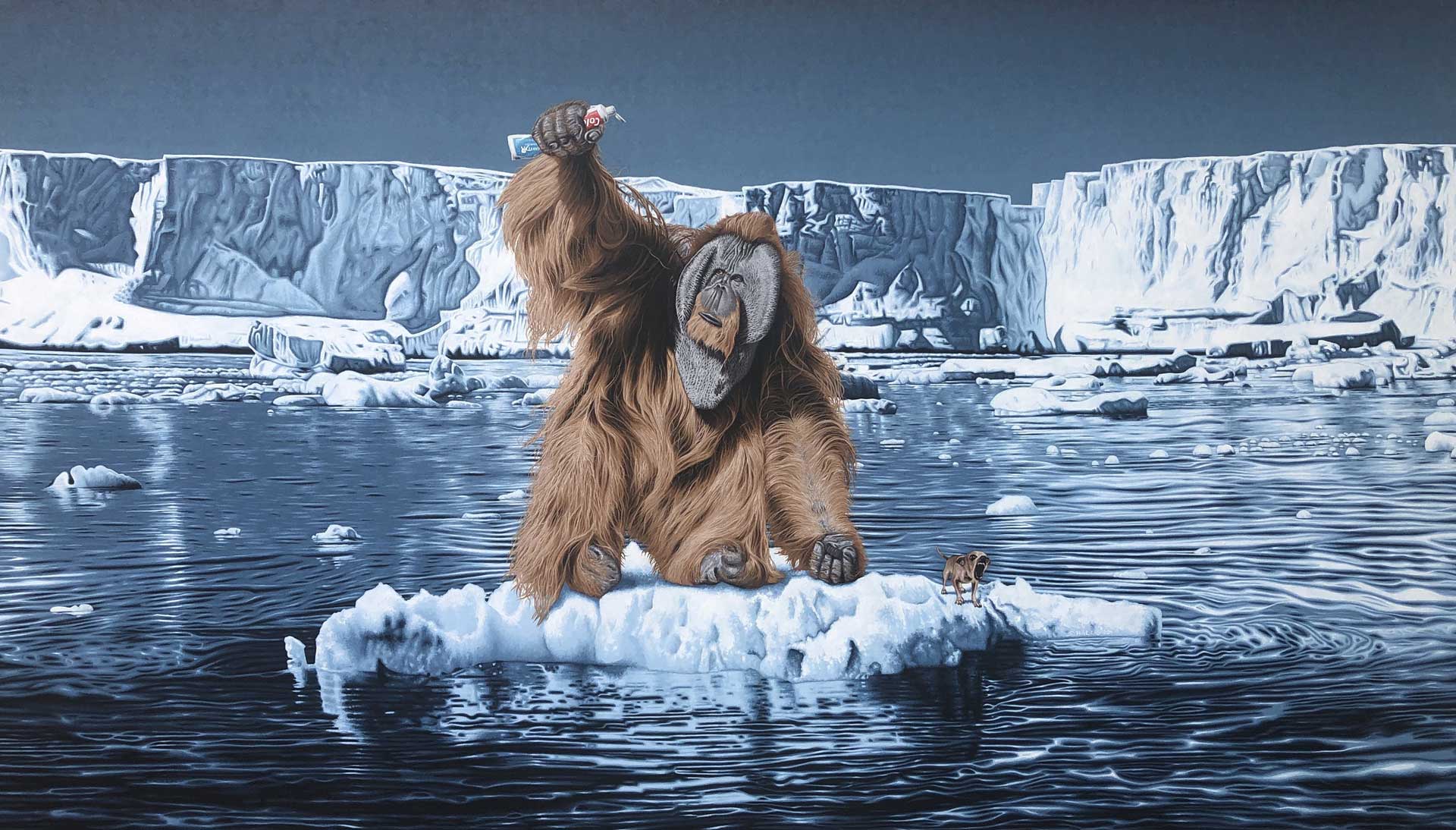When beginning a painting, I first decide on the subject. For the past few years I’ve been more focused on the environment and man’s destruction of habitats globally.
The first part of the process is research, endless hours scanning the internet for images of animals, waste products and plastics, environments and objects, and various peoples.
When settling on a particular issue or animal I print out the chosen images and then draw a grid of approximately, ½ inch squares on them. I stretch and gesso a canvas and draw, with a pencil an appropriate size of scaled up grid on the canvas. I then use this grid to transfer the images I have selected.
Once the drawing is completed, I then do a transparent wash of a neutral color wash all over.
I begin with the background, painting all of the black areas and slowly advancing with lighter and lighter tones of the chosen color, until I reach the white highlights.
In the case of large complex backgrounds or subjects, I will pre-mix about 12 tones in between black and white, of the chosen color, and complete smaller sections at a time.
In composing my work, I will usually find another seeming incongruous object to juxtapose the main character in the foreground.
As a general rule, if the background is rendered in cool colors then the main subject and satellite object will be rendered in warm tones. This gives a depth to the canvas that I relish. I may also paint the background to appear slightly out of focus to enhance this feeling of depth.
In my latest painting, “Toothpaste Cannot Go Back in the Tube”, I decided that the environment, of a polar ice shelf, was going to be as potent as the animals, hopefully, vigorously showing the important connection everything has.
Thanks to Jerry Quarterly for his work creating these process videos.
